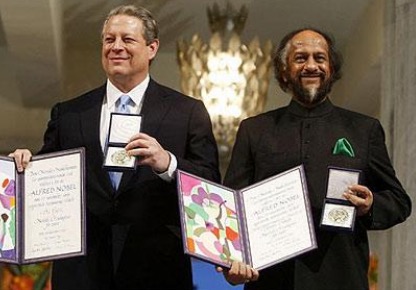 Australia’s environmental warriors have failed in their campaigns over the past 40 years to stop the Australia’s uranium mining industry. In the past decade in particular, the anti-uranium movement has suffered devastating defeats, as uranium mining has expanded with bi-partisan support from Labor and conservative parties. It’s instructive to analyse why.
Australia’s environmental warriors have failed in their campaigns over the past 40 years to stop the Australia’s uranium mining industry. In the past decade in particular, the anti-uranium movement has suffered devastating defeats, as uranium mining has expanded with bi-partisan support from Labor and conservative parties. It’s instructive to analyse why.
The anti-uranium movement operated on a permanent basis through the nation’s foremost environmental organisations and hundreds of other smaller organisations. It had access to considerable financial resources[1], to sympathetic media and to Commonwealth and state parliamentary sympathisers. It was gifted three nuclear accidents as a platform for its advocacy.
Given these propitious circumstances, how did the movement fail so completely to impede the development of Australia’s nuclear industry? What accounts for this monumental failure of policy, strategy and tactics? First, let’s look at the past decade’s landmark political decisions in support of uranium. The process began with the Howard Coalition government, and the ALP followed suit.
- The centre-left Prime Minister, Julia Gillard, endorsed uranium mining and exports ten days after Japan’s Fukushima nuclear plant was destroyed by a tsunami
- Eight months later, Ms Gillard announced her government would export uranium to India, a non-signatory to the Nuclear Non-Proliferation Treaty, contrary to ALP policy. Shortly after, the policy fell humbly into line with her decision
- Four uranium projects were approved under mainstream environmental laws, despite the close involvement of the anti-uranium movement in the assessment process
- In 2016, South Australia’s centre-left government began to implement a Royal Commission report that endorsed SA as a suitable place for a global nuclear waste repository.
The anti-uranium movement emerged in the early 1970s to protest French nuclear testing in the Pacific. The movement next turned its attention to domestic uranium mining, using the Fraser government’s decision to permit mining at Ranger as a focus for activism. By the end of the 1970s, an anti-uranium strategy had emerged: frame uranium as a class-based issue and connect it with a broader political assault on the capitalist status quo; establish many small, local opposition groups; coordinate their activities; frame the movement as large, vigorous and publicly-supported; focus on emotions, especially fear; and target traditional land owners as a key point of resistance to mining.
However, even as insiders conceded at the time, ‘the ’70s movement did not fundamentally threaten Australia’s nuclear industry’.[2] The movement declined during the 1980s. The rise and decline of the Nuclear Disarmament Party paved the way for the co-option of the anti-uranium movement by the Labor Party[3]. The movement then declined even more rapidly, and uranium economics became much more important in shaping uranium development.
By the mid-1980s, anti-uranium activism tried a more mainstream advocacy strategy of influencing public opinion.[4] By the late-1990s, the movement’s strategy had become, by default, ‘isolated campaigning’.[5] While some environmental NGOs continued to fund full-time ‘anti-nuclear campaigners’, isolated campaigning has become the norm.
Why did it fail? A first clue is found in this history. The policy, strategy and tactics of the movement were shaped by Marxist ideological[6] beliefs. This never appealed to a mainstream Australian audience, which is more interested in workable solutions for real problems. The anti-uranium movement also faced the global failure of its founding ideology: in the 1980s, the Cold War ended and Soviet communism collapsed.
















